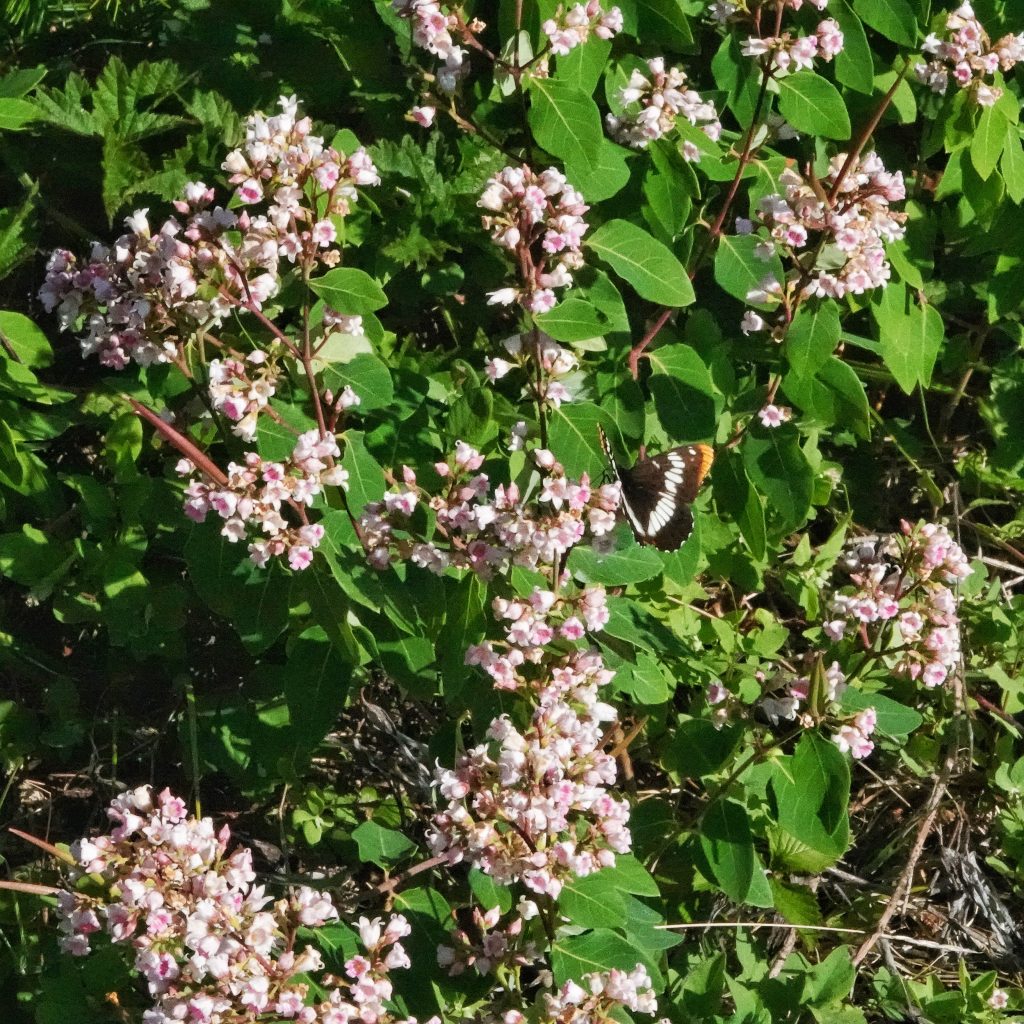
While Apocynum androsaemifolium does attract insects from several different orders, it is as a nectar plant for lepidoptera that it really shines. Bob Pyle reports finding 14 species and hundreds of individuals on a single patch. For us reflex and stealth challenged photographers of leps, the thing that makes this plant so wonderful is the way in which it seems to completely occupy the attention of the butterflies consuming its nectar. I have at times been able to get my camera within inches of feeding butterflies that are flighty enough that I usually measure the success of a stalk in terms of yards.
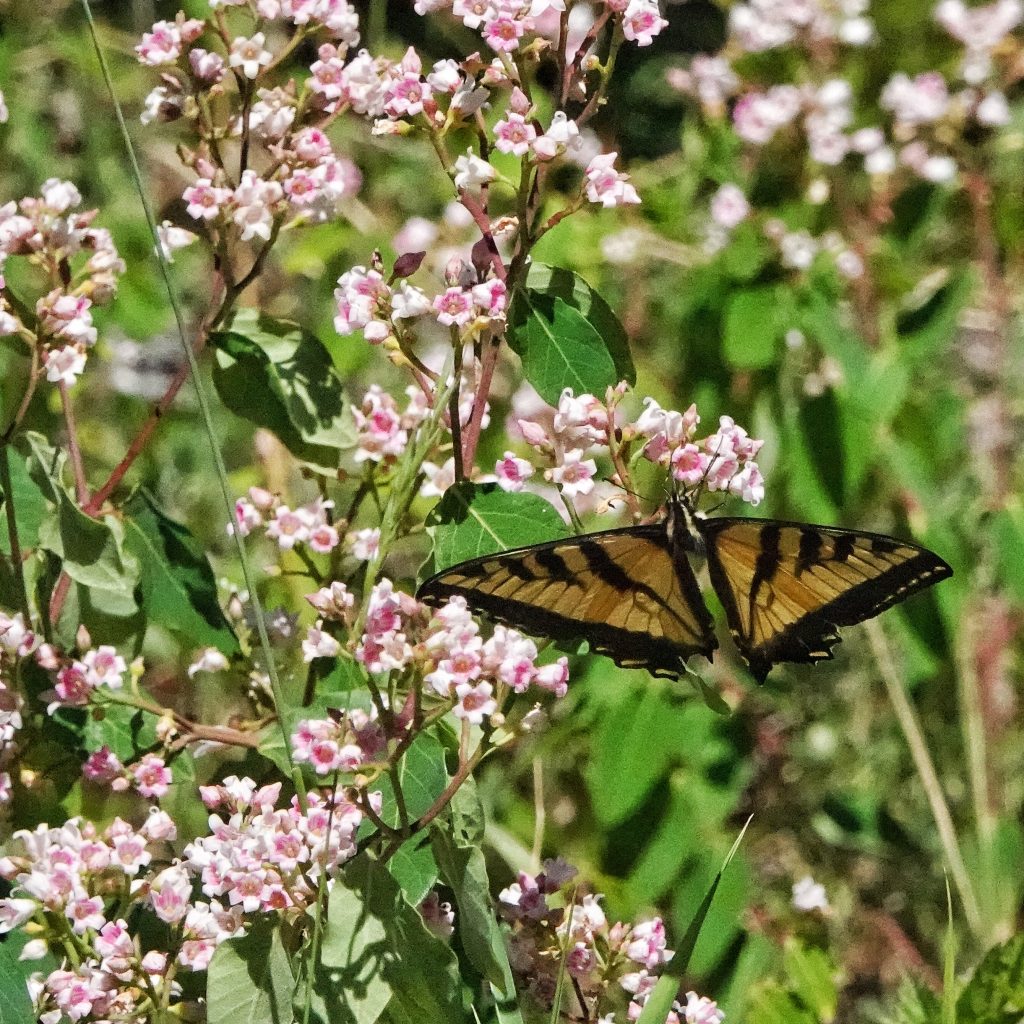
The first time I ever thought ‘I wonder if that is dogbane’ (though I can’t tell you whether it was this species or A. cannabinum) was while wandering a BPA access road under some of their huge, long distance transmission power lines. It seemed something of an insect wasteland, despite the abundant vegetation and a fair diversity of (admittedly mostly non-native) wildflowers, and sunny skies, with only the occasional disturbed grasshopper, or fast moving swallowtail or white butterfly, to attract my attention. Until I found at least a dozen Snowberry Checkerspots (Euphydryas colon) crowding a dark leaved patch with pretty little pink flowers that was smaller than our kitchen table. This was in the days where I only had an iPhone for photography, but these checkerspots let me get up close and personal, and I got good enough photos to not only be able to identify the species, but to get confirmation of that identification.
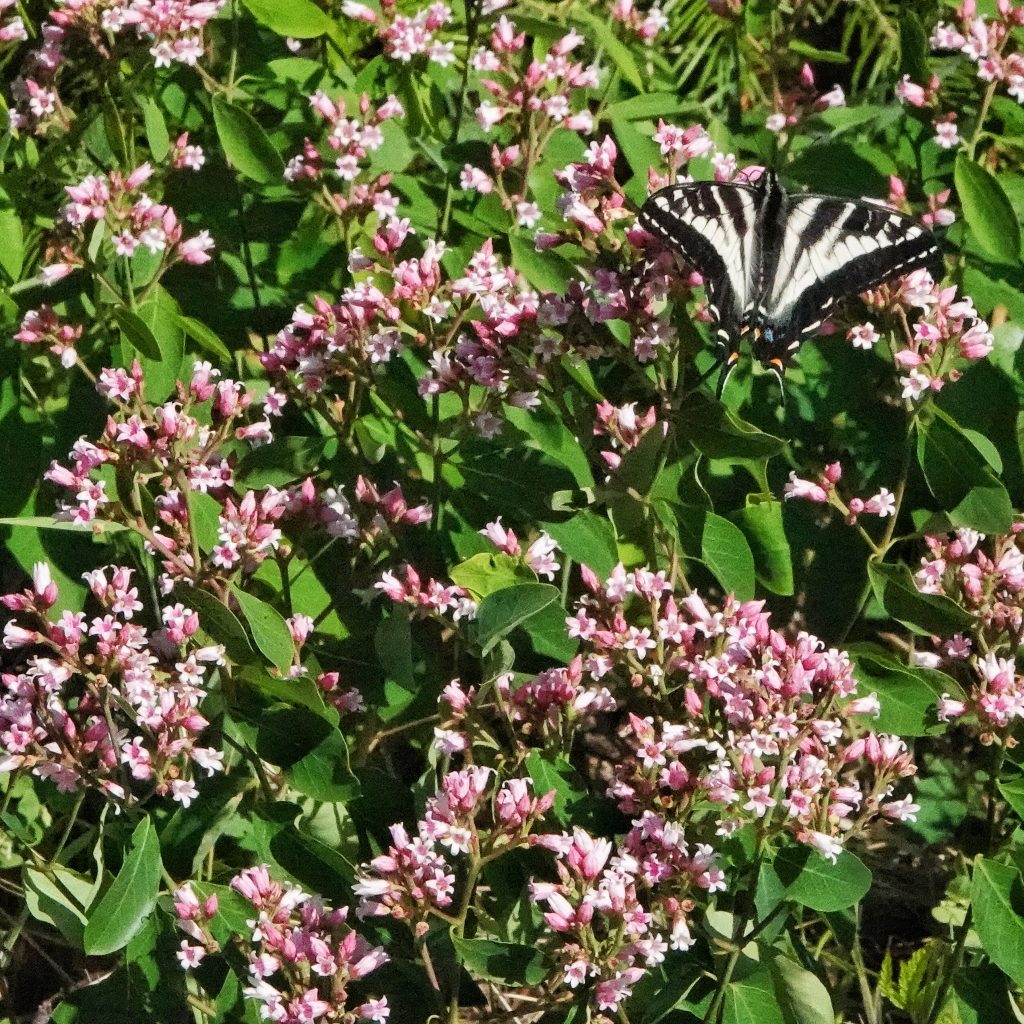
One of the reasons why it was disappointing that the patch I mentioned in the blog ‘Lost Creek’ was not blooming is that that patch of dogbane is often a good spot for fritillaries, and one of my goals for this summer is to try to differentiate and profile at least some of the very tricky, at least for me, fritillaries. But then when I headed back down the hill I stopped at the first patch I mentioned in that blog, and with the reappearance of the sun and 75⁰ temperatures the joint was hopping, and I added a few species to the morning observations, making a total of 7 species of butterflies found in this patch, including a couple that I’m pretty sure (and therefore probably wrong) are Speyaria coronis.
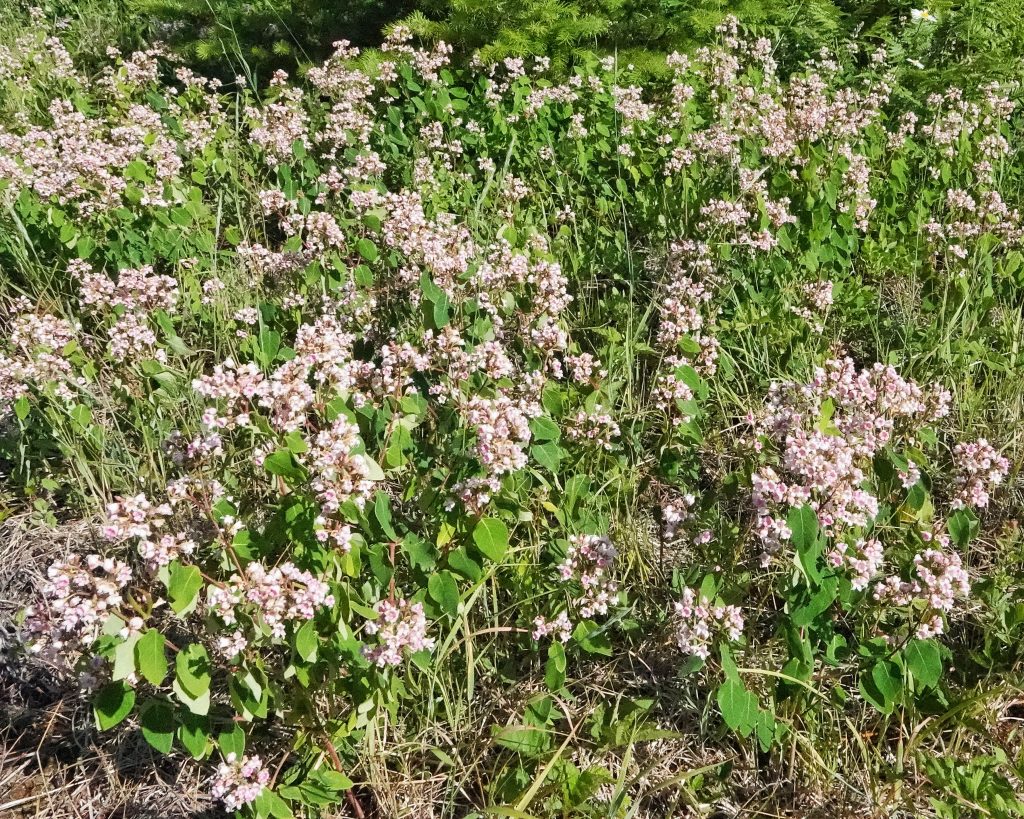
Ethnobotany– “…Inner bark fiber used as thread and twine for binding and tying…Infusion of roots taken about once a week as a contraceptive…Root used as a diuretic and urinary medicine…Decoction of green berries used as a kidney medicine…Decoction of green berries used as a heart medicine…Leaves chewed and the juice and pulp swallowed or dried leaves smoked as an aphrodisiac…” are some of the 54 entries for this plant on BRIT – Native American Ethnobotany Database; for a good and seemingly thorough explication of its medicinal uses and the dangers thereof, see Apocynum androsaemifolium – Spreading Dogbane on eflora.neocities.org
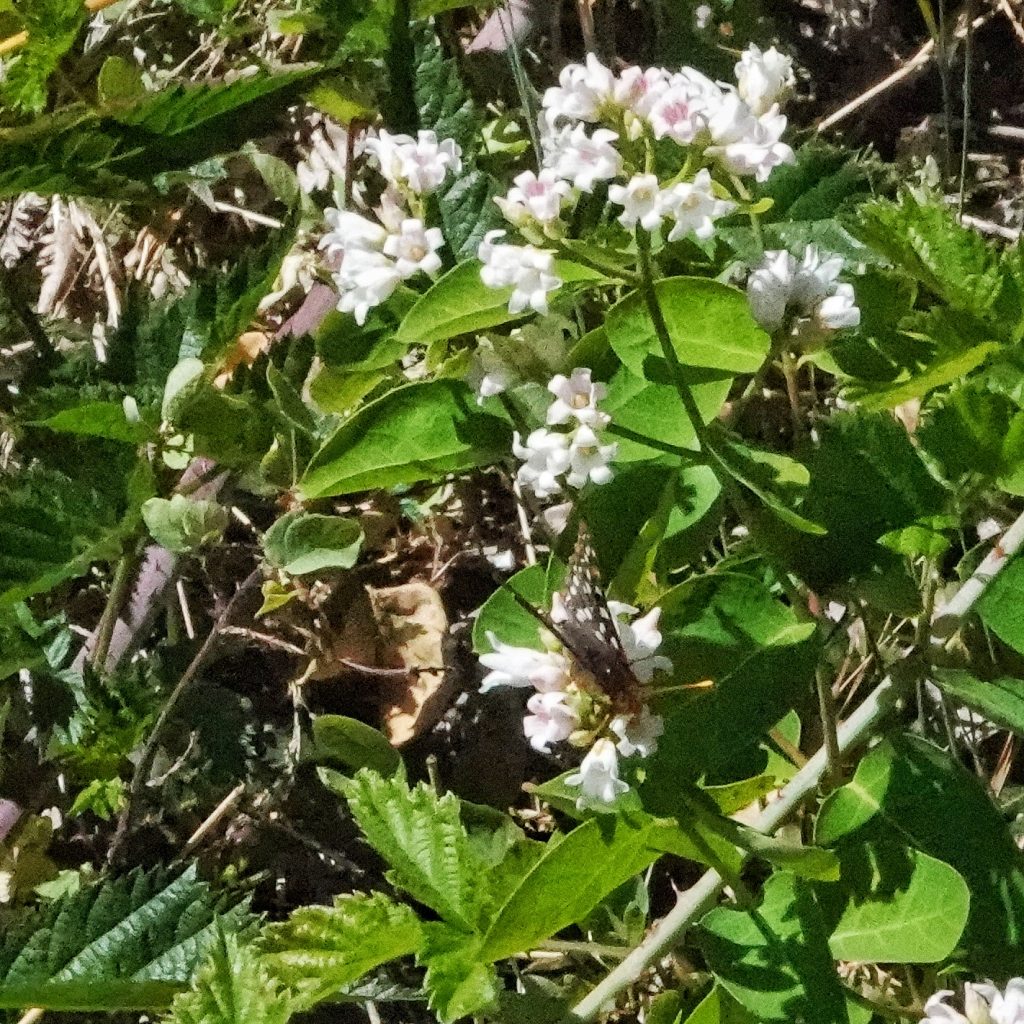
Description– “Stems erect or ascending, to 50 cm, glabrous or tomentose; much branched, a clearly dominant stem often lacking. Leaves drooping; blades ovate, oblong, or elliptic, glabrous or tomentose; petiolate to subsessile. Inflorescences cymes, overtopping vegetative branches. Flowers corollas campanulate, 4.5–9 mm, white or pink, often pink-striped; lobes reflexed, > 25% as long as fused portion. Fruits to 15 cm. Seeds with coma to 2 cm.” OregonFlora Apocynum androsaemifolium
Similar species– Apocynum cannabinum has cream to green colored flowers less than 5mm wide, without reflexed lobes, and the vegetative branches overtop the inflorescences; also grows in wetter habitats.
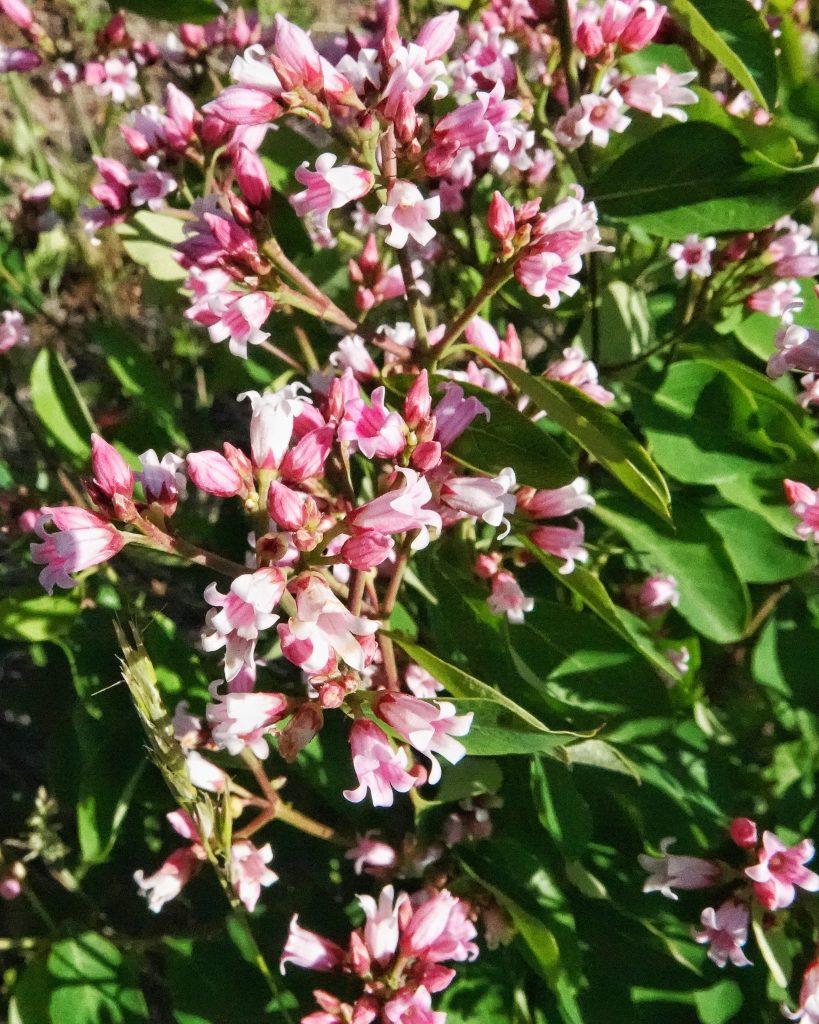
Habitat– “Grows in rocky places, dry open areas in conifer forests and adjacent shrub-steppe and prairies, at low to subalpine elevations.” Apocynum androsaemifolium | Spreading Dogbane | Wildflowers of the Pacific Northwest
Range– “…widespread across most of Canada, the United States (including Alaska but excluding Florida), and northeast Mexico.” https://en.wikipedia.org/wiki/Apocynum_androsaemifolium; locally common region wide in appropriate habitat.
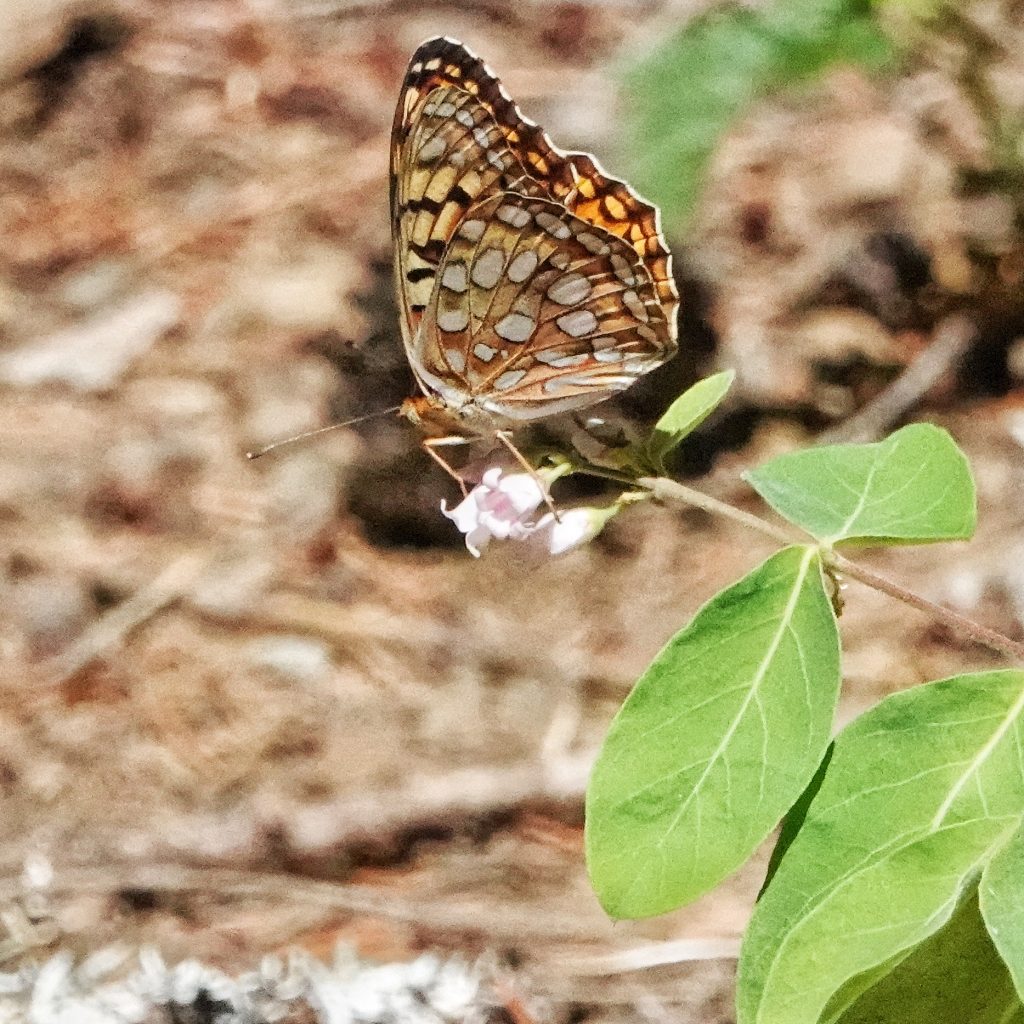
Eaten by– Mammals tend to avoid this plant because of its cardiac glycosides and other resins; the nectar is utilized by almost every butterfly and diurnal moth that can access it, and they are thought to be its primary pollinators, although I also find many bees, wasps, and syrphid flies on it.; used as a larval host by the moths “Arctiidae: Dogbane Tiger Moth (Cycnia tenera), Oregon Cycnia (Cycnia oregonensis), Clio Tiger Moth (Ectypia clio); Noctuidae: Mouse Moth (Amphipyra tragopoginis), Purple-lined Sallow (Pyrrhia experimens), Trichordestra tacoma; Pyralidae: Dogbane Saucrobotys (Saucrobotys futilalis).” https://www.cnps-scv.org/images/handouts/CaliforniaPlantsforLepidoptera2014.pdf; the leaf beetles Brachypnoea puncticollis, Chrysochus auratus, C. cobaltinus, Lexiphanes saponatus, Paria aterrima, Scelolyperus lecontii, and Systena blanda have been found on this plant.
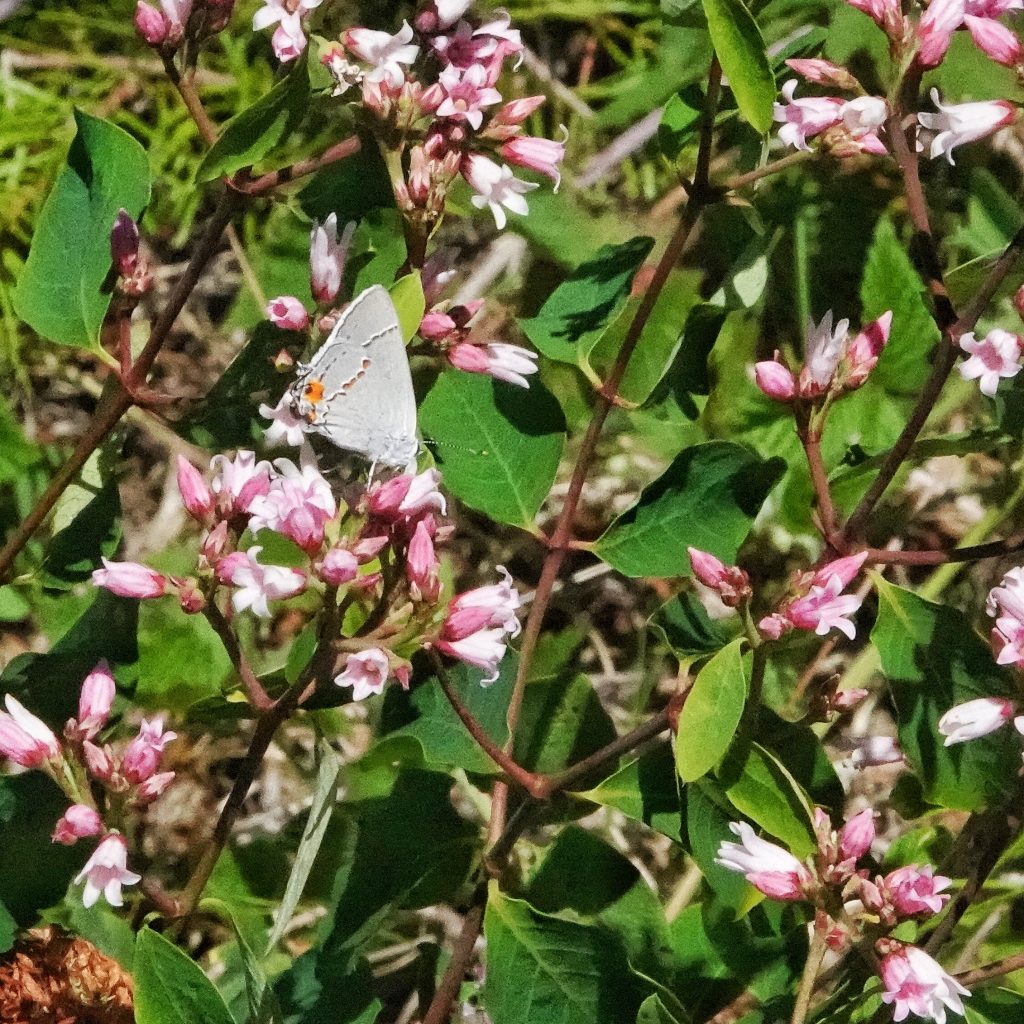
Reproductive timing– June to September
Etymology of names–Apocynum is from the Greek words for ‘far from dogs’, because of its toxic effects on that species. The specific epithet androsaemifolium refers to the similarity of its leaves to those of Hypericum androsaemum.
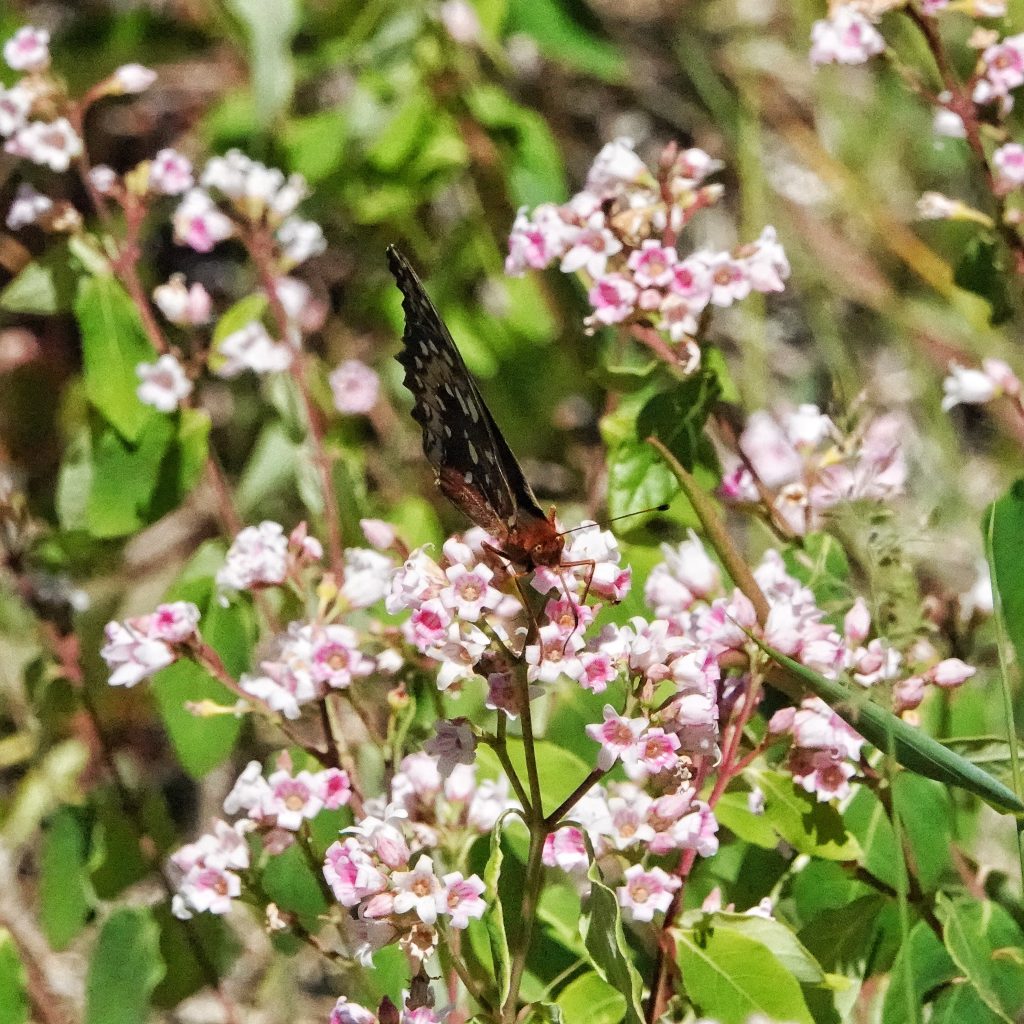
OregonFlora Apocynum androsaemifolium
Apocynum androsaemifolium | Spreading Dogbane | Wildflowers of the Pacific Northwest
https://www.cnps-scv.org/images/handouts/CaliforniaPlantsforLepidoptera2014.pdf
BRIT – Native American Ethnobotany Database
Apocynum androsaemifolium Spreading Dogbane PFAF Plant Database
Apocynum androsaemifolium – Spreading Dogbane
Spreading Dogbane (Apocynum androsaemifolium)
https://en.wikipedia.org/wiki/Apocynum_androsaemifolium
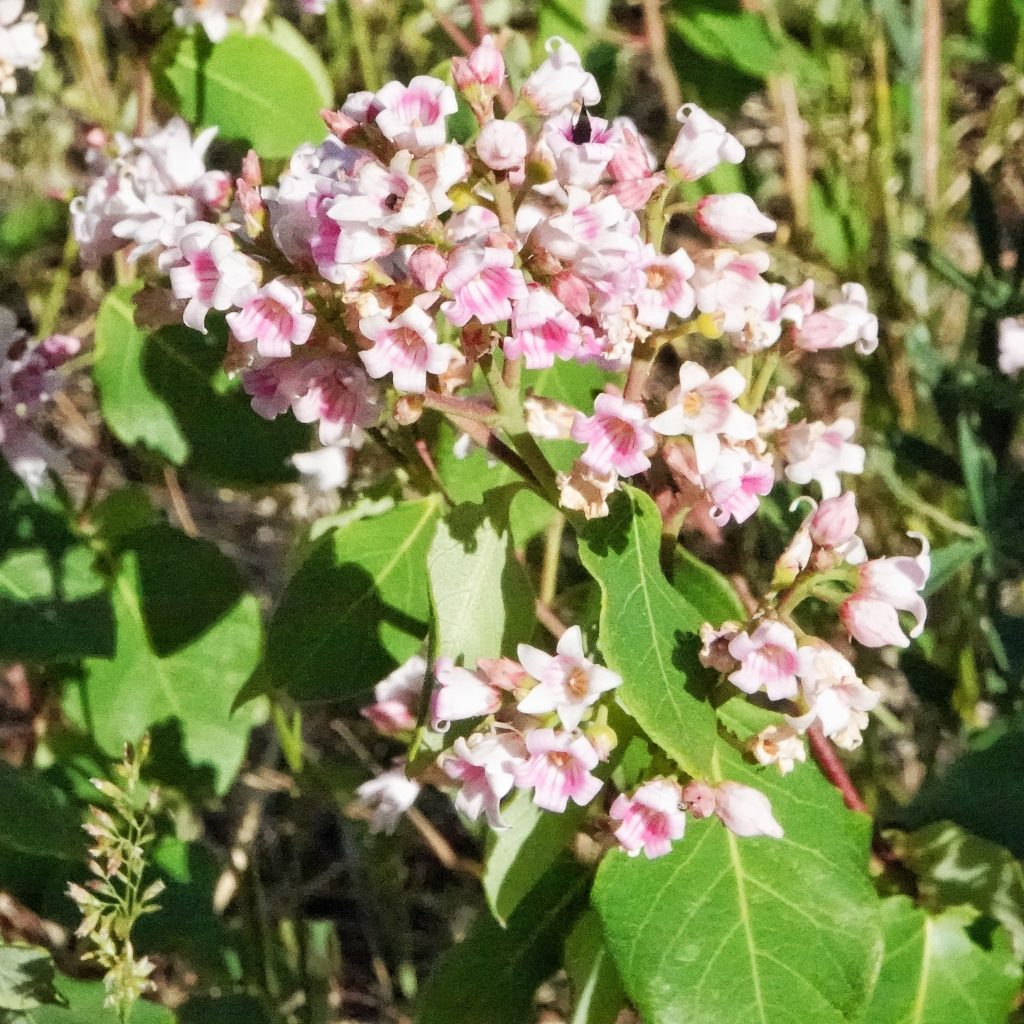
I was just exploring along the North Fork John Day River along FS Road 55 (off Hwy 395 – nearest “town” is Ukiah) in NE Oregon and I saw so much spreading dogbane with butterflies on almost every patch. There were so many butterflies/moths, it was like driving through a mayfly hatch!
Wow! Very cool, Jennie! Glad you got to see that!